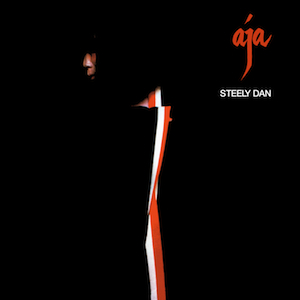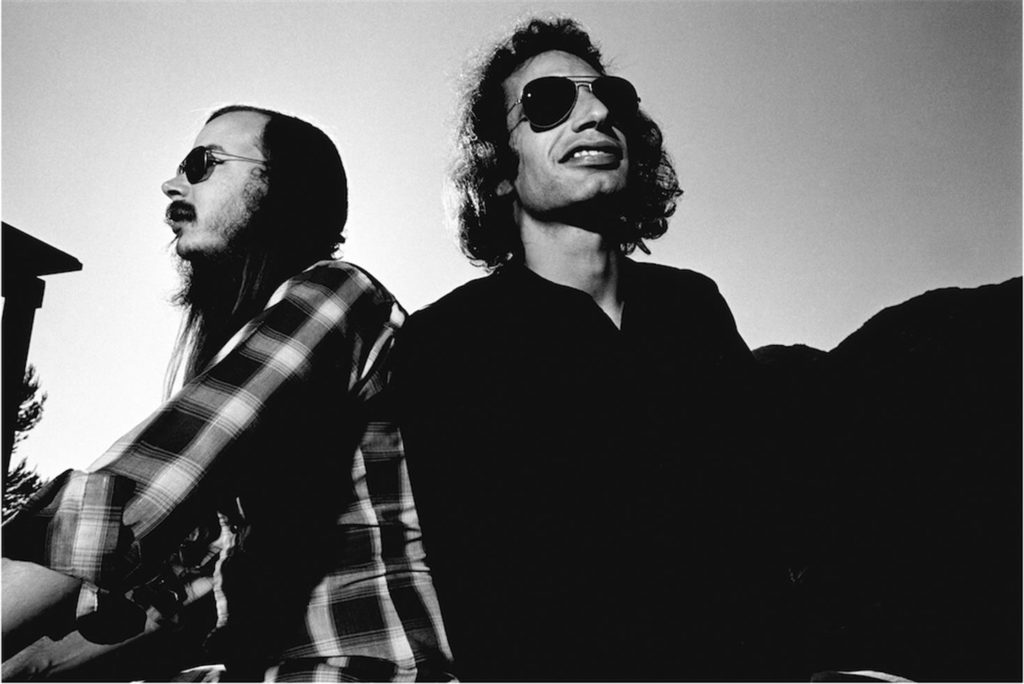Various forms of the records-that-changed-my-life meme have been making the rounds lately, so I came up with my own version, which I call “The Twenty-Five Record Albums That Changed My Life.” I’ve written about one of these albums each weekday in the rough order in which I first heard them.

It stood to reason, then, that Steely Dan’s Aja should have hit me hard when it came out in the fall of 1977. For Aja wasn’t a fusion album, even though the title track featured a tenor saxophone solo by none other than Miles Davis’ Wayne Shorter: it was, rather, a rock album, but one made by two pop musicians, Walter Becker and Donald Fagen, who had fully assimilated the language of jazz and integrated it into their way of thinking about pop music. It was, at bottom and in every sense of the phrase, a musician’s album.
Michael Duffy understood this—up to a point, anyway—when he reviewed Aja for Rolling Stone:Aja will continue to fuel the argument by rock purists that Steely Dan’s music is soulless, and by its calculated nature antithetical to what rock should be. But this is in many ways irrelevant to a final evaluation of this band, the only group around with no conceptual antecedent from the Sixties. Steely Dan’s six albums contain some of the few important stylistic innovations in pop music in the past decade. By returning to swing and early be-bop for inspiration—before jazz diverged totally from established conventions of pop-song structure—Fagen and Becker have overcome the amorphous quality that has plagued most other jazz-rock fusion attempts.
“Peg” and “Josie” illustrate this perfectly: tight, modal tunes with good hooks in the choruses, solid beats with intricate counterrhythms and brilliantly concise guitar solos. Like most of the rest of Aja. these songs are filled out with complex horn charts, synthesizers and lush background vocals that flirt with schmaltzy L.A. jazz riffs. When topped by Fagen’s singing, they sound like production numbers from an absurdist musical comedy….
That said, it’s true that I didn’t read Duffy’s review, or anything else about Aja, until many years later. I simply bought the album when it came out, put on “Black Cow,” the first track, and understood in a single, all-encompassing flash of perception that this was my kind of rock, and always would be. I’d experienced the same kind of aesthetic revelation when, a year or two earlier, I saw Chinatown, my first film noir, on TV. It was as though I’d pulled on a bespoke suit for the first time: by wearing it, I knew who I was. Small wonder that I spent hours in the practice room, figuring out the changes to “Deacon Blues” by ear. I was determined to make them my own—and I did.

I’ve kept on listening to pop music, and making fresh discoveries about it, in the forty-two years since Aja came out. But none of those subsequent discoveries has been truly life-changing, at least not in the way that my first hearing of Aja permanently changed my relationship to the music of my youth. From then on, I approached pop music as an adult, and what I wrote about The Band in this space the other day applies with equal force to Aja: “Having once heard it, I knew what popular music at its very best was capable of saying about human experience, and have never again gladly settled for anything less.”
(Last in the series)
* * *
“Black Cow,” the first track from Aja:
A video featurette about the making of “Peg”:
A video featurette about the making of “Deacon Blues”:
* * *
To read about album #1, go here.
To read about album #2, go here.
To read about album #3, go here.
To read about album #4, go here.
To read about album #5, go here.
To read about album #6, go here.
To read about album #7, go here.
To read about album #8, go here.
To read about album #9, go here.
To read about album #10, go here.
To read about album #11, go here.
To read about album #12, go here.
To read about album #13, go here.
To read about album #14, go here.
To read about album #15, go here.
To read about album #16, go here.
To read about album #17, go here.
To read about album #18, go here.
To read about album #19, go here.
To read about album #20, go here.
To read about album #21, go here.
To read about album #22, go here.
To read about album #23, go here.
To read about album #24, go here.
